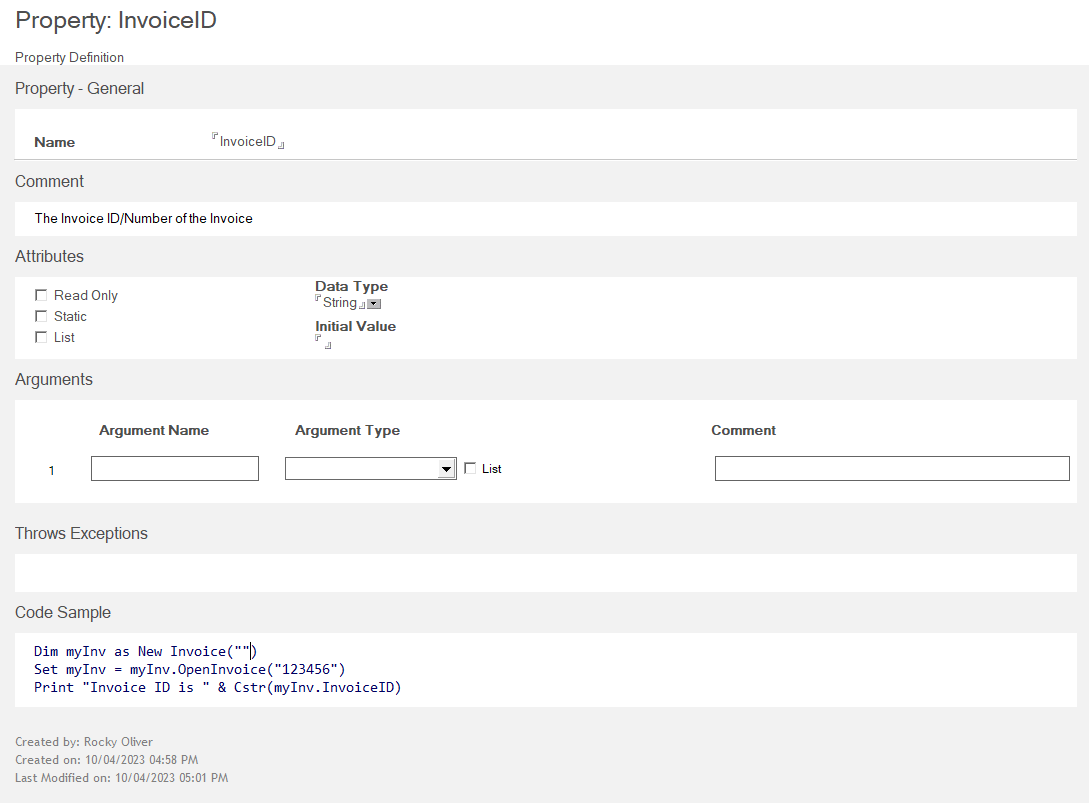Property
The Property form is used to define any Property(ies) for a Project Library or a Class. With this form you provide the Name of your Property, any comments that explain the property, and the various attributes of the Property such as Read-Only, Data Type, Initial Value, etc. And as always you can provide some Sample Code to show how to interact with the Property programmatically.

Now there are a couple of things you can create that are at the Project level, as "Globals", or globally available items. These are Variable and Type.
The following sections describe the fields on the Property form.
Name
The name of the property. A property name should not be a VoltScript, LotusScript, or a C++ keyword.
Comment
Enter any information relevant to the Property in this field.
Attributes
The following Attributes may optionally be selected as needed:
Read-only
Select this attribute to indicate that the value of this property may not be set from VoltScript. If a script tries to change the value of this property, it gets a syntax error indicating that the property is read-only.
Also, no Set<property_name> function will be generated from this property, so the value may only be set from within its own class.
Static
Defines whether or not the Property's local variables are saved between calls.
List
Indicates that the property is a List instance of its Data Type.
Data Type and Initial Value
In the Attributes area, you can specify the Data Type and Initial Value of the Property.
The Data Type field is where you select the data type of the objects to be collected. The drop-down list contains LotusScript datatypes, Domino Objects formerly called Notes back-end classes, and classes already defined in the project. You should select the datatype of the items in the collection.
The Initial Value field refers to the value that the property should be initialized to in the constructor's member initialization list for the class. This field may be a set to a literal value, or to the name of one of the arguments that you have specified for your constructor (the New method).